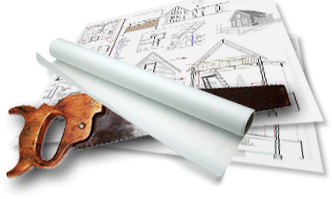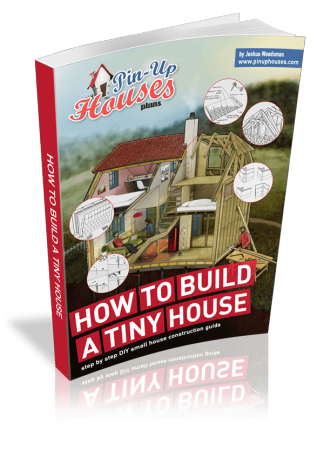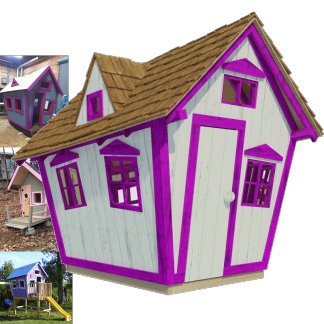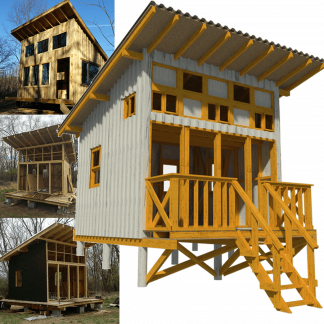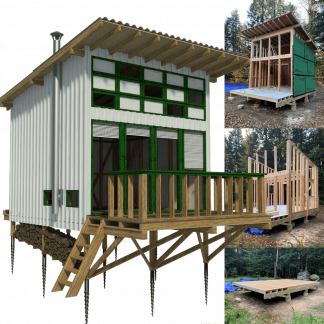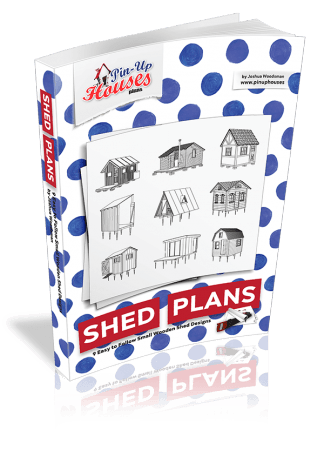Building a tiny house doesn’t produce tiny messes. Even the most carefully planned DIY project comes with sawdust, scrap wood, torn packaging, and offcuts piling up faster than expected. With limited space to work and store materials, it doesn’t take long before clutter gets in the way of progress.
Keeping your site clean isn’t just about staying tidy—it’s a matter of safety, efficiency, and keeping your momentum. Whether you’re working in your backyard, on a remote piece of land, or in a friend’s garage, knowing how to manage construction waste can make your build smoother and your workspace more functional.
Plan Your Waste Strategy Before You Start
Before you even hammer the first nail, it helps to think about what you’ll be throwing away. Most tiny house builders focus on how to bring materials in, not where the leftovers will go. Scrap wood, cardboard, insulation, plastic wrap, nails, and broken tools all add up, and if you don’t plan for them, they’ll start taking over your build site.
Set aside space specifically for waste and debris. If you’re working in a confined area, consider using stackable bins, buckets, or even wheelbarrows to separate and store different types of waste. Label each container clearly so you won’t have to sort through sharp scraps later. It’s also smart to schedule dump runs or recycling center visits in advance, especially if you’re far from town. The more you plan early, the less you’ll have to scramble during the build.
Reuse and Repurpose: Smart Ways to Minimize Waste
Tiny house projects naturally produce a lot of offcuts—short boards, oddly shaped plywood scraps, leftover insulation. But not all of it needs to be tossed. With a little creativity, many of those materials can be reused in meaningful ways throughout your build.
Short lengths of 2x4s can become blocking, framing supports, or shelving brackets. Plywood remnants work great for drawer bottoms, underlayment, or temporary work surfaces. Even oddly shaped insulation pieces can be patched together in non-critical areas, such as utility sheds or under-floor spaces. Keeping a pile of “maybes” nearby lets you reach for what you need without having to head back to the hardware store.
Repurposing materials reduces waste, stretches your budget, and adds a level of resourcefulness to the build. It also makes clean-up less daunting when you know that the scrap pile might still hold something useful.
Separate and Conquer: On-Site Waste Sorting Made Easy
When waste piles up without a system, it slows everything down. You spend more time dodging debris than building, and clean-up becomes a frustrating end-of-day chore. Creating a simple sorting setup from the start keeps things efficient and safer underfoot.
Use clearly labeled bins or containers to separate materials by type, including wood, metal, plastics, packaging, and general trash. Even makeshift solutions, such as buckets, old crates, or salvaged boxes, can work as long as they’re accessible and consistent. This small step pays off later when it’s time to recycle or dispose of materials.
Sorting as you go also helps you spot what can be reused. A bin full of clean off-cuts is easier to dip into than a heap of tangled waste. It also prevents hazardous items—such as nails or shards—from ending up in places they shouldn’t be. For those handling truly hazardous materials, having proper training, such as a hazwoper certification, ensures you know how to manage, store, and dispose of these safely.
Pro Tip: Use Self-Dumping Hoppers for Efficient Site Cleanup
Larger DIY projects often produce bulky, heavy debris—such as concrete chunks, wet sawdust, and framing offcuts—that can quickly overwhelm a small site. Self-dumping hoppers offer a practical solution for managing materials, making it easier to collect, transport, and unload them without the need for constant heavy lifting or multiple trips to the dump.
These hoppers are designed to hold bulk material and dump it automatically when positioned over a dumpster or disposal area. They’re commonly used in warehouses and on job sites, but they’re just as effective for a solo builder with a full trailer or a compact work zone. With wheels or forklift compatibility, they move heavy waste safely and take a lot of strain off your back after long build days.
Some builders choose to rent hoppers on a short-term basis or repurpose them as mobile waste bins on larger off-grid plots. If you’re planning a multi-phase build or tackling multiple small structures—such as sheds, saunas, or storage units—a hopper can help keep your site clean without requiring constant trips to the landfill.
Go Green: Eco-Friendly Disposal Options
Once your waste is sorted, the next step is making sure it ends up in the right place. Many building materials can be recycled, reused by others, or disposed of in ways that reduce environmental impact.
Clean wood can often be chipped into mulch or donated to community building programs. Metal scraps—like nails, brackets, or hardware—can be dropped off at most scrap yards. Cardboard packaging and plastics should be recycled if local facilities accept construction materials. For biodegradable waste, such as sawdust from untreated wood, composting might even be an option.
Before tossing everything into the landfill, check your local recycling and reuse centers to see if they accept the items you have. Many have special drop-off options for construction and demolition materials. The EPA’s guide to sustainable construction waste management offers more ideas on how to keep your site efficient and environmentally responsible.
Wrapping Up: Keep Your Build Site Clean, Safe & Sustainable
Every hour you spend organizing your workspace pays back in smoother builds, fewer mistakes, and less stress. A clean site isn’t just easier to work in—it’s safer and more efficient, especially when you’re juggling tools, materials, and tight deadlines.
Whether you’re reusing scrap, sorting waste by type, or investing in smart tools like self-dumping hoppers, managing construction debris with intention can transform the building process. It helps you stay focused, reduces trips to the landfill, and makes your workspace feel like something worth building in.
For a deeper understanding of the broader challenges of waste in modern housing design, this breakdown of high-density housing waste management and reconstruction challenges provides some compelling context.

